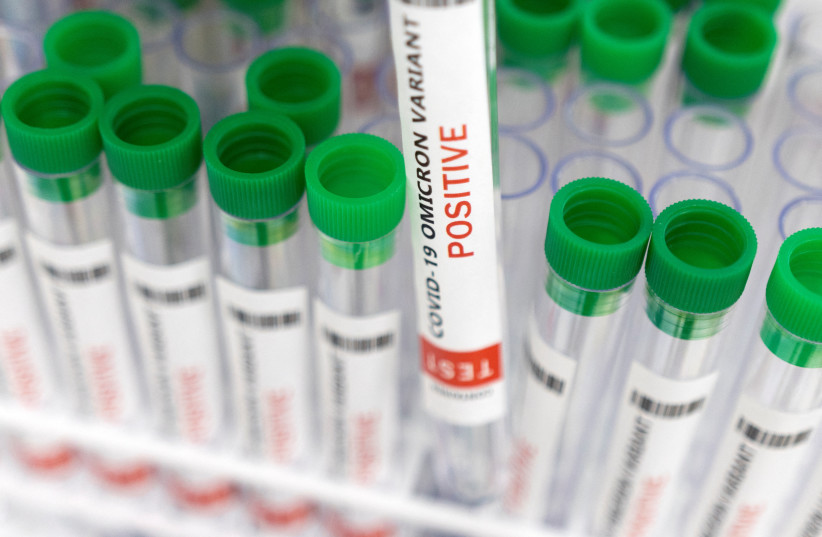If future new variants are significant enough to become variants of concern, they will be more transmissible than Omicron.

The world’s first recorded case of COVID-19 was detected on November 27, 2019, in Wuhan, a province of Hubei, China. Less than a month later, multiple cases were being detected of an unknown virus, soon to spread beyond Wuhan to become the global coronavirus pandemic.
Now, more than two years and multiple variants later, as the Omicron variant washes across the world, bringing record-high infection rates with it, people are still asking the question: Will we soon see the end of COVID-19?
Because Omicron has proven to be more contagious and less deadly than previous variants, some have predicted that future variants will continue this way, becoming less severe and more contagious until herd immunity is reached and the virus morphs into something more similar to influenza, which circulates yearly but is not considered dangerous except for infants and the elderly.
While it is impossible to say exactly what will come after the Omicron wave has ended, one thing is certain: If it is significant enough to become a variant, it will be more transmissible than Omicron. If it is not, it will not succeed in taking over as the primary variant.
So once the Omicron wave has subsided and a semblance of normalcy has returned, what can we expect future variants to look like, and what will be the appropriate way to deal with them?

Future variants should not be treated the way they have been until now, and Omicron should mark a turning point in the way COVID-19 is treated, according to Nina Horowitz, a public health expert and epidemiologist.
“I think that Omicron isn’t a significant variant; we just don’t know how to treat COVID as a society,” she told The Jerusalem Post. “That’s not to say that people don’t get sick from Omicron, because some do get very sick, although many, many fewer end up in the hospital from Omicron.”
The initial responses to Omicron – travel bans, the possibility of lockdown and isolation for those exposed but uninfected – were more suited to the earlier variants of the virus, Horowitz said. But they have not been adapted to deal with the Omicron variant, which is vastly different from anything that came before it, he added.
Omicron, for those who have caught it, may act as a vaccine due to the antibodies it creates, but there is a risk in relying on natural immunity because the virus can mutate, Horowitz said.
“I think, moving forward, we have to take each variant as they come,” she said. “If it’s a bad variant, we should have the people most at risk of severe disease take most precautions. I think omicron is showing us that we can’t make the lives of the less vulnerable, like kids, worse just because we want to prevent disease in the most vulnerable.”
However, some have theorized that because Omicron had so many mutations and was not a descendant of the Delta variant as had been expected, a variant more similar to Delta could reappear again in the future. If this happens, the high risks associated with the Delta variant could once again become a more pressing issue.
A more severe variant could once again start spreading, Horowitz said. But it is unlikely to cause the same damage that Delta or any previous variant did, because more people have background immunity provided by the milder and more transmissible Omicron, she added.
The coronavirus vaccines were developed to provide immunity against the spike protein (S protein) of the virus. While they still provide protection against serious illness, their ability to stop infection became less effective once the Omicron variant developed extensive mutations specifically to the S protein.
However, actually being infected with the virus should, in theory, provide more all-round immunity against other aspects of the virus, and not just against the S protein.
Therefore, whereas prior to Omicron, a person’s body may not have managed to mount a successful response to the Delta variant with just two doses of the vaccine, should a more infectious and severe variant ever resurface, the immunity provided by the Omicron variant, combined with the vaccines, may be sufficient to fight off further infection.
“The benefit of Omicron is that it provides more robust immunity to more people than the vaccines might, so a variant like Delta or Alpha would be less harmful across the population than it was when it came before Omicron,” Horowitz said.
“The coronavirus will become more like the flu,” she said. “I believe that, yes, every once in a while there may be a more serious variant of SarsCOV2 going around. But I don’t think we will always have to worry about some version of COVID going around, because most of the time the version of COVID going around will be like a cold and not something to worry about.”
As reported by The Jerusalem Post
